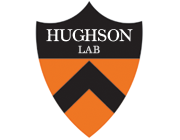An Autoinducer Analogue Reveals an Alternative Mode of Ligand Binding for the LasR Quorum-Sensing Receptor
Type
Bacteria use a cell-cell communication process called quorum sensing to coordinate collective behaviors. Quorum sensing relies on production and group-wide detection of extracellular signal molecules called autoinducers. Here, we probe the activity of the Pseudomonas aeruginosa LasR quorum-sensing receptor using synthetic agonists based on the structure of the native homoserine lactone autoinducer. The synthetic compounds range from low to high potency, and agonist activity tracks with the ability of the agonist to stabilize the LasR protein. Structural analyses of the LasR ligand binding domain complexed with representative synthetic agonists reveal two modes of ligand binding, one mimicking the canonical autoinducer binding arrangement, and the other with the lactone head group rotated approximately 150°. Iterative mutagenesis combined with chemical synthesis reveals the amino acid residues and the chemical moieties, respectively, that are key to enabling each mode of binding. Simultaneous alteration of LasR residues Thr75, Tyr93, and Ala127 converts low-potency compounds into high-potency compounds and converts ligands that are nearly inactive into low-potency compounds. These results show that the LasR binding pocket displays significant flexibility in accommodating different ligands. The ability of LasR to bind ligands in different conformations, and in so doing, alter their potency as agonists, could explain the difficulties that have been encountered in the development of competitive LasR inhibitors.

